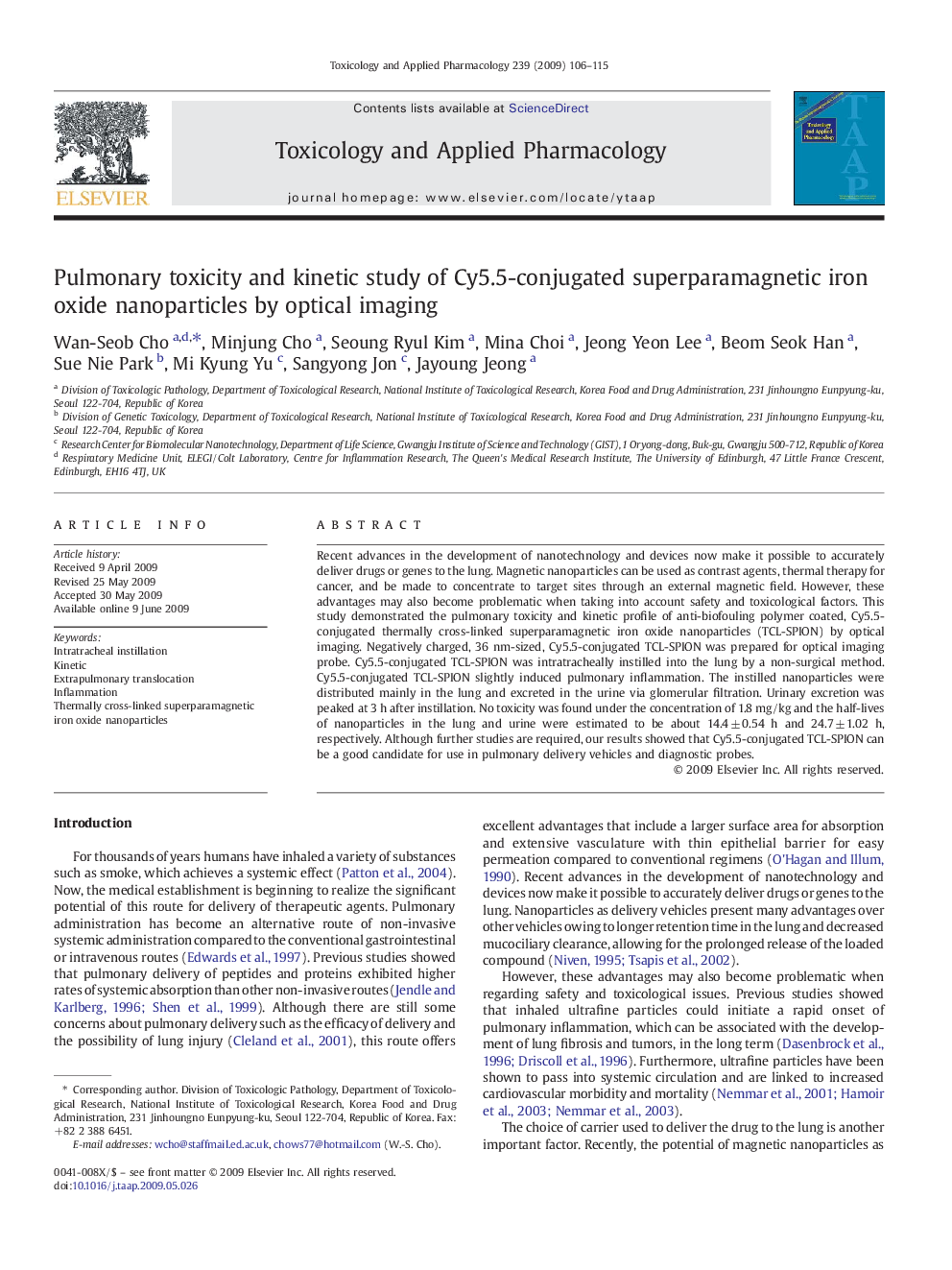| Article ID | Journal | Published Year | Pages | File Type |
|---|---|---|---|---|
| 2570121 | Toxicology and Applied Pharmacology | 2009 | 10 Pages |
Recent advances in the development of nanotechnology and devices now make it possible to accurately deliver drugs or genes to the lung. Magnetic nanoparticles can be used as contrast agents, thermal therapy for cancer, and be made to concentrate to target sites through an external magnetic field. However, these advantages may also become problematic when taking into account safety and toxicological factors. This study demonstrated the pulmonary toxicity and kinetic profile of anti-biofouling polymer coated, Cy5.5-conjugated thermally cross-linked superparamagnetic iron oxide nanoparticles (TCL-SPION) by optical imaging. Negatively charged, 36 nm-sized, Cy5.5-conjugated TCL-SPION was prepared for optical imaging probe. Cy5.5-conjugated TCL-SPION was intratracheally instilled into the lung by a non-surgical method. Cy5.5-conjugated TCL-SPION slightly induced pulmonary inflammation. The instilled nanoparticles were distributed mainly in the lung and excreted in the urine via glomerular filtration. Urinary excretion was peaked at 3 h after instillation. No toxicity was found under the concentration of 1.8 mg/kg and the half-lives of nanoparticles in the lung and urine were estimated to be about 14.4 ± 0.54 h and 24.7 ± 1.02 h, respectively. Although further studies are required, our results showed that Cy5.5-conjugated TCL-SPION can be a good candidate for use in pulmonary delivery vehicles and diagnostic probes.
